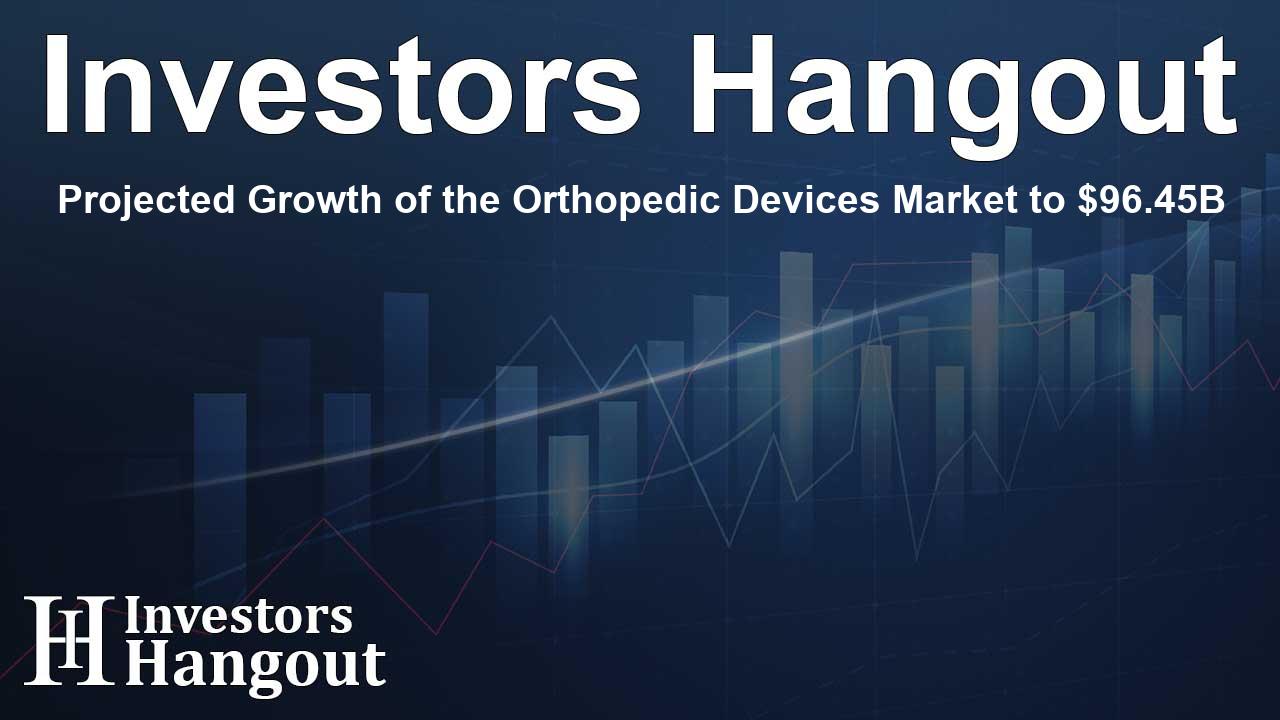Projected Growth of the Orthopedic Devices Market to $96.45B

The Growing Orthopedic Devices Market
The orthopedic devices market is experiencing notable growth, projected to expand from USD 63.06 billion in 2024 to an impressive USD 96.45 billion by 2034. With a compounded annual growth rate (CAGR) of 4.34%, this surge in market size showcases the increasing demand for orthopedic solutions driven by an aging population and advancements in technology.
Understanding Orthopedic Devices
Orthopedic devices are medical tools utilized in diagnosing, treating, and managing musculoskeletal conditions. With a rise in cases of osteoporosis and osteoarthritis as the population ages, there is a significant demand for orthopedic devices to improve quality of life. Innovations such as robotic-assisted surgery and 3D printing for custom implants enhance the accuracy of procedures, while smart implants provide real-time data on patient recovery.
Market Trends and Drivers
A primary driver of this market growth is the increasing elderly population, which correlates with higher incidences of orthopedic issues requiring surgical intervention. Furthermore, active lifestyles and sports participation contribute to a heightened need for orthopedic solutions due to injuries. Advances in materials, particularly biocompatible substances and newly developed polymers, enable the design of customized orthopedic products that cater to patients’ unique needs.
Market Segmentation
The orthopedic devices market is multifaceted, segmented by product and end-use. The joint replacement segment, focusing on orthopedic implants, led the market in 2024. This segment benefits from escalating rates of osteoarthritis and advances in surgical techniques like minimally invasive surgery (MIS). Orthobiologics are also gaining traction, promising effective treatment options for joint pain using innovative therapies.
Key Players and Innovations
Notable participants in the orthopedic market include industry giants such as Johnson & Johnson, Medtronic, Stryker Corporation, and Zimmer Biomet. These companies are investing heavily in research and development to bring groundbreaking products to market. Recent advancements include the introduction of a 3D-printed porous ingrowth platform by Croom Medical and the success of robotic surgical systems in performing knee implants, enhancing surgical outcomes significantly.
Regional Insights
North America has emerged as the largest market for orthopedic devices, capturing a significant share of 47% in 2024. Factors contributing to this dominance are the high prevalence of sports-related injuries and advanced surgical facilities. The Asia-Pacific region is expected to witness the fastest growth owing to increasing healthcare expenditure and awareness surrounding orthopedic care, along with the expansion of medical tourism initiatives within countries like India and Thailand.
Government Initiatives and Regulations
Regulatory bodies worldwide are supporting the orthopedic devices market through various initiatives. In the United States, the FDA's Breakthrough Devices Program expedites patient access to innovative technologies, enhancing treatment efficiency for debilitating conditions. Likewise, other countries are improving market access for innovative medical devices to address critical healthcare needs.
Challenges Ahead
While the orthopedic devices market is growing, it is not without challenges. Complications related to infections, implant loosening, and the financial burden of advanced technologies can hinder market growth. Furthermore, ensuring equitable access to cutting-edge orthopedic solutions remains a challenge, highlighting the need for ongoing innovation and patient education in the marketplace.
Conclusion
The orthopedic devices market is poised for substantial growth with projected revenues reaching USD 96.45 billion by 2034. Challenges notwithstanding, the advancement of technology and the dynamic healthcare landscape signal brighter prospects for orthopedic solutions.
Frequently Asked Questions
What is driving the growth of the orthopedic devices market?
The growth is primarily driven by an aging population, increasing rates of orthopedic disorders, active sports participation, and technological innovations in treatment and devices.
What are prominent trends in this market sector?
Significant trends include advancements in biocompatible materials, robotics, AI in surgery, and developments in personalized orthopedic solutions.
Who are the leading players in the orthopedic devices market?
Key players include Johnson & Johnson, Stryker Corporation, Medtronic, and Zimmer Biomet, all recognized for their innovative product lines and market contribution.
What are the regional distinctions in the orthopedic devices market?
North America leads the market, followed closely by the Asia-Pacific region, which is expected to see the fastest growth due to rising healthcare demands and technological adoption.
What challenges does the orthopedic devices market face?
Challenges include issues related to infection post-surgery, implant failures, high development costs, and the need for advanced technology integration into practice.
About The Author
Contact Logan Wright privately here. Or send an email with ATTN: Logan Wright as the subject to contact@investorshangout.com.
About Investors Hangout
Investors Hangout is a leading online stock forum for financial discussion and learning, offering a wide range of free tools and resources. It draws in traders of all levels, who exchange market knowledge, investigate trading tactics, and keep an eye on industry developments in real time. Featuring financial articles, stock message boards, quotes, charts, company profiles, and live news updates. Through cooperative learning and a wealth of informational resources, it helps users from novices creating their first portfolios to experts honing their techniques. Join Investors Hangout today: https://investorshangout.com/
The content of this article is based on factual, publicly available information and does not represent legal, financial, or investment advice. Investors Hangout does not offer financial advice, and the author is not a licensed financial advisor. Consult a qualified advisor before making any financial or investment decisions based on this article. This article should not be considered advice to purchase, sell, or hold any securities or other investments. If any of the material provided here is inaccurate, please contact us for corrections.
